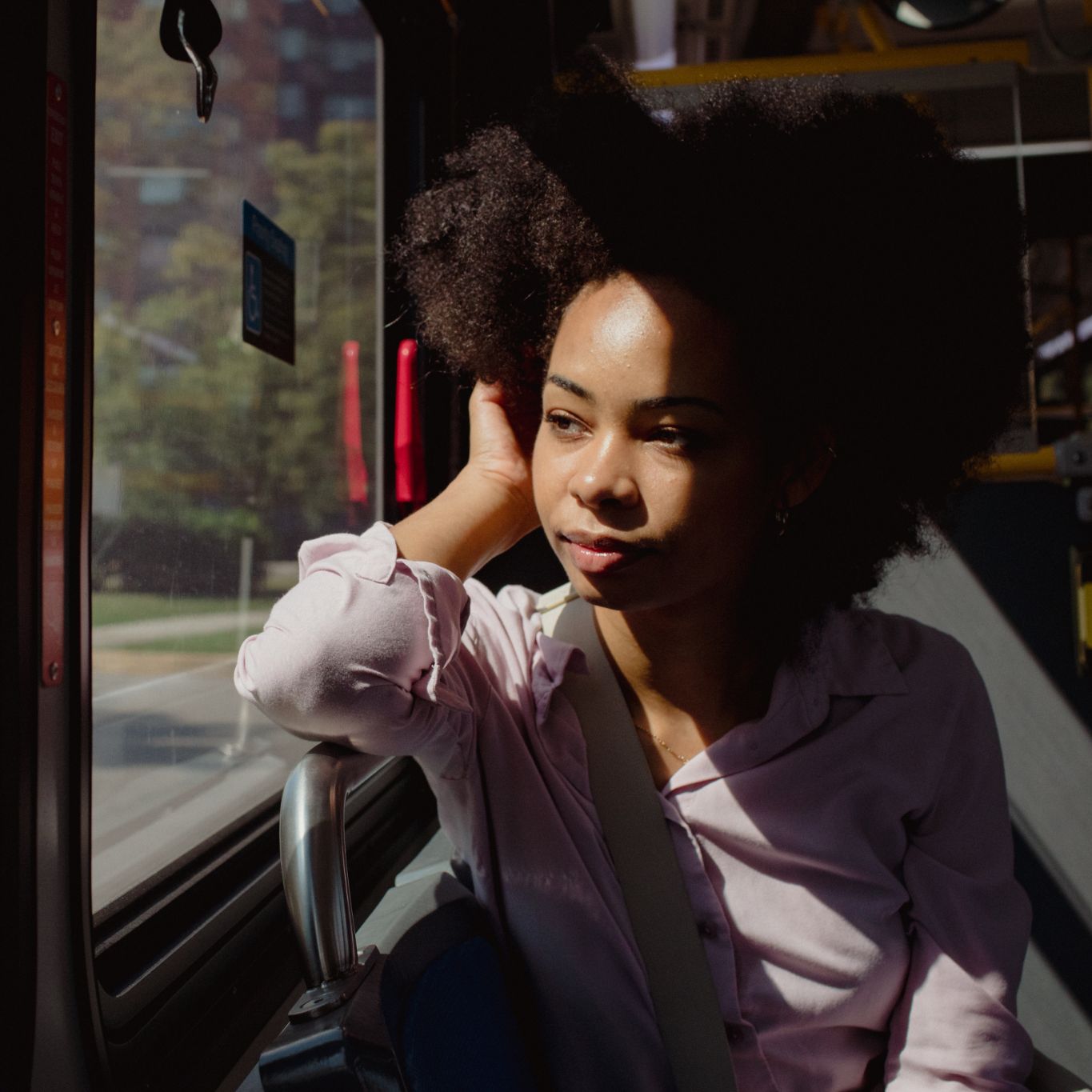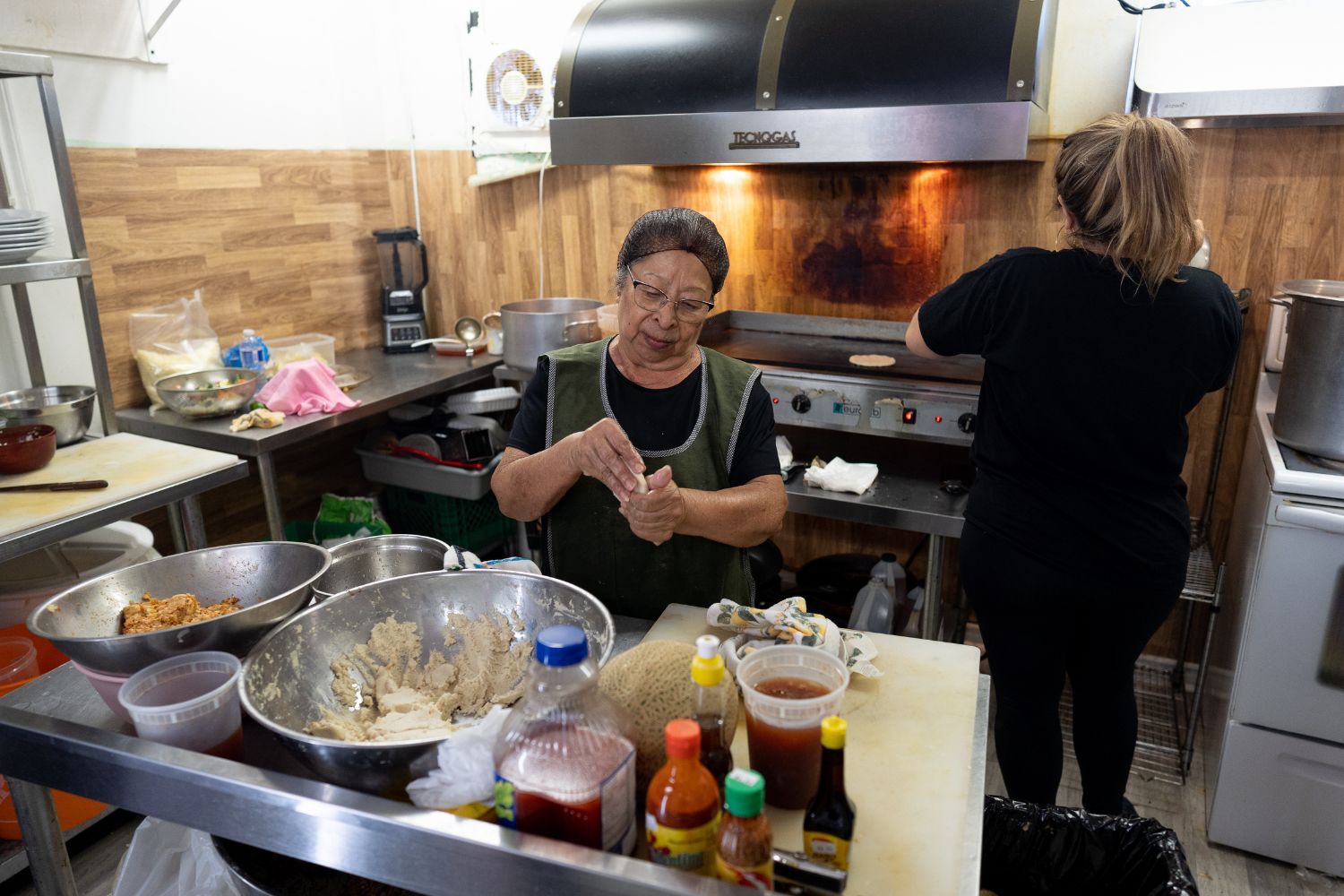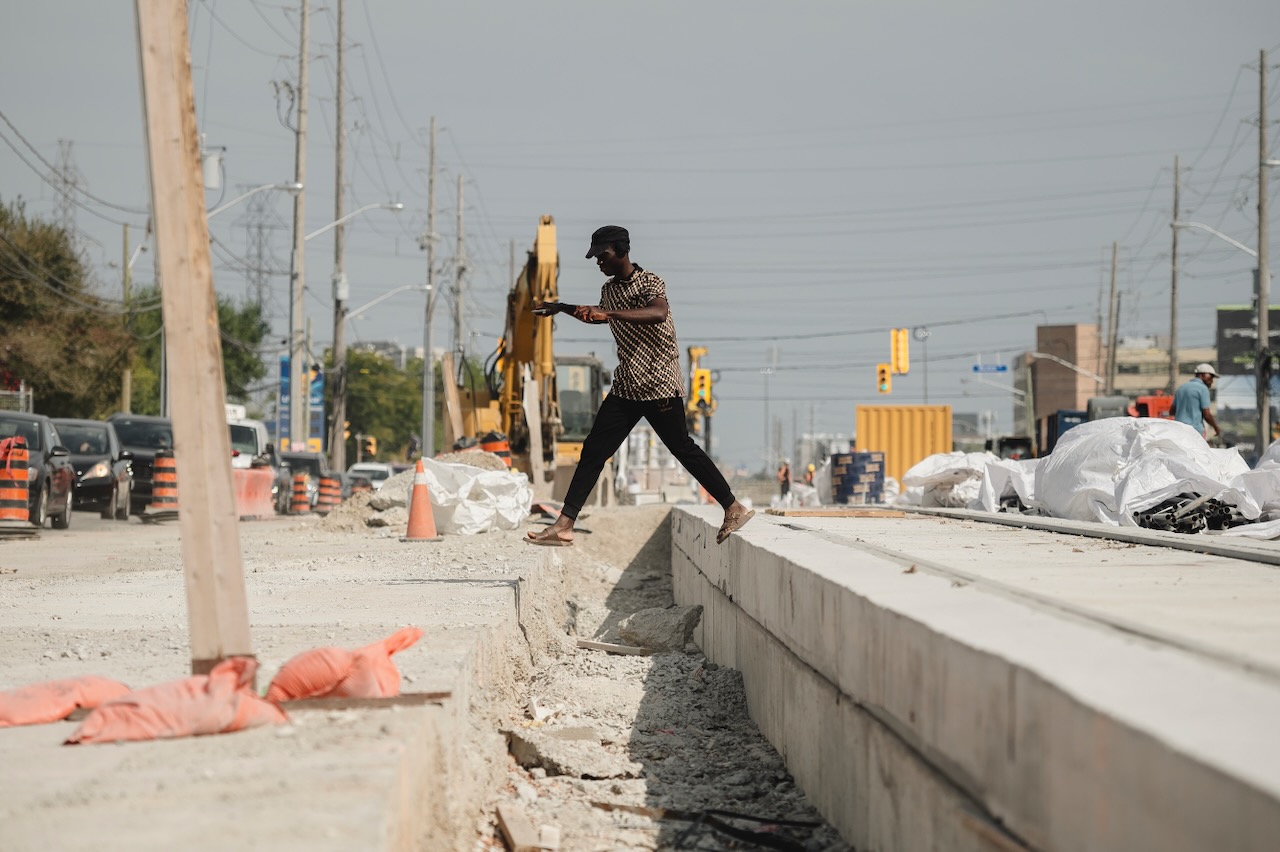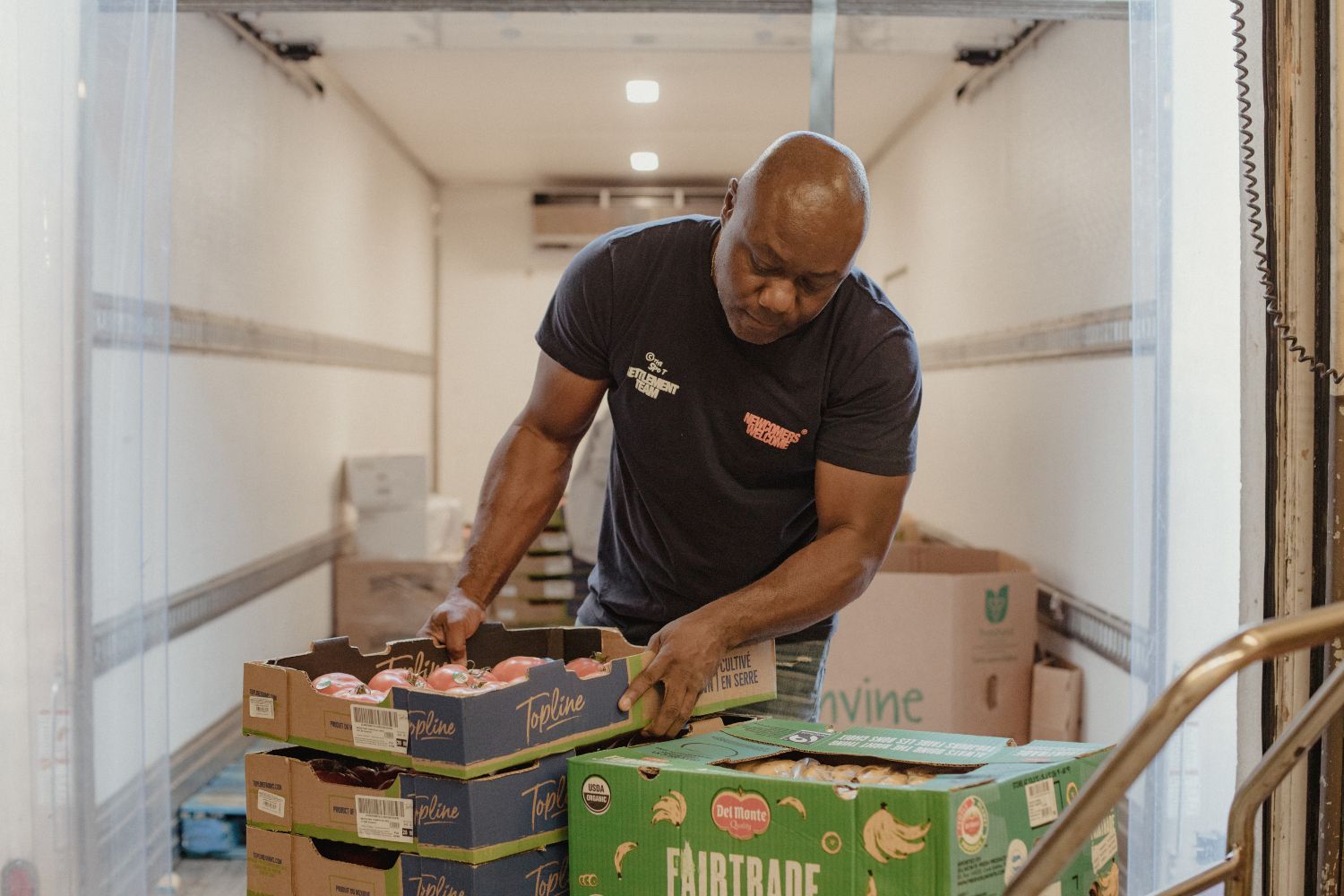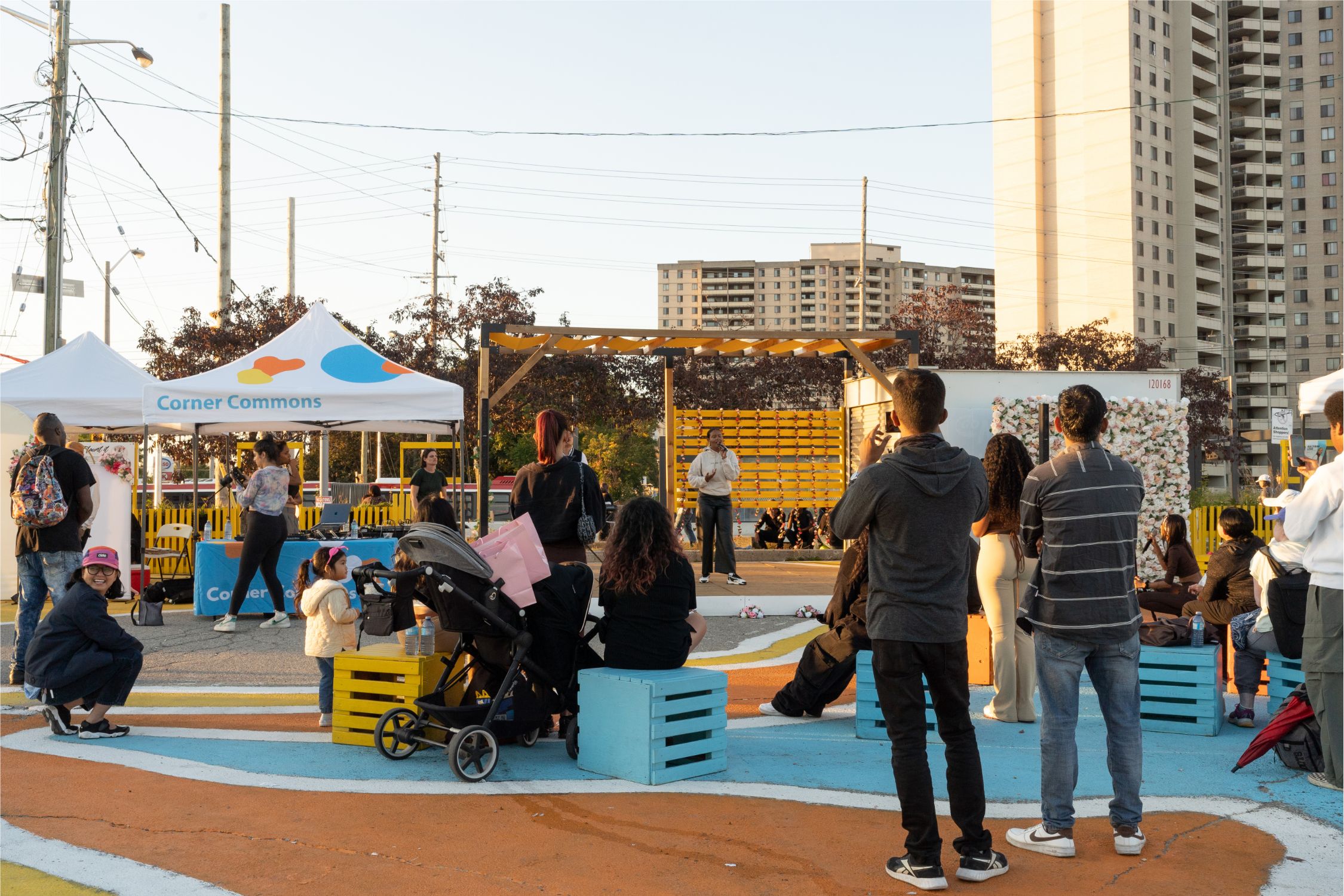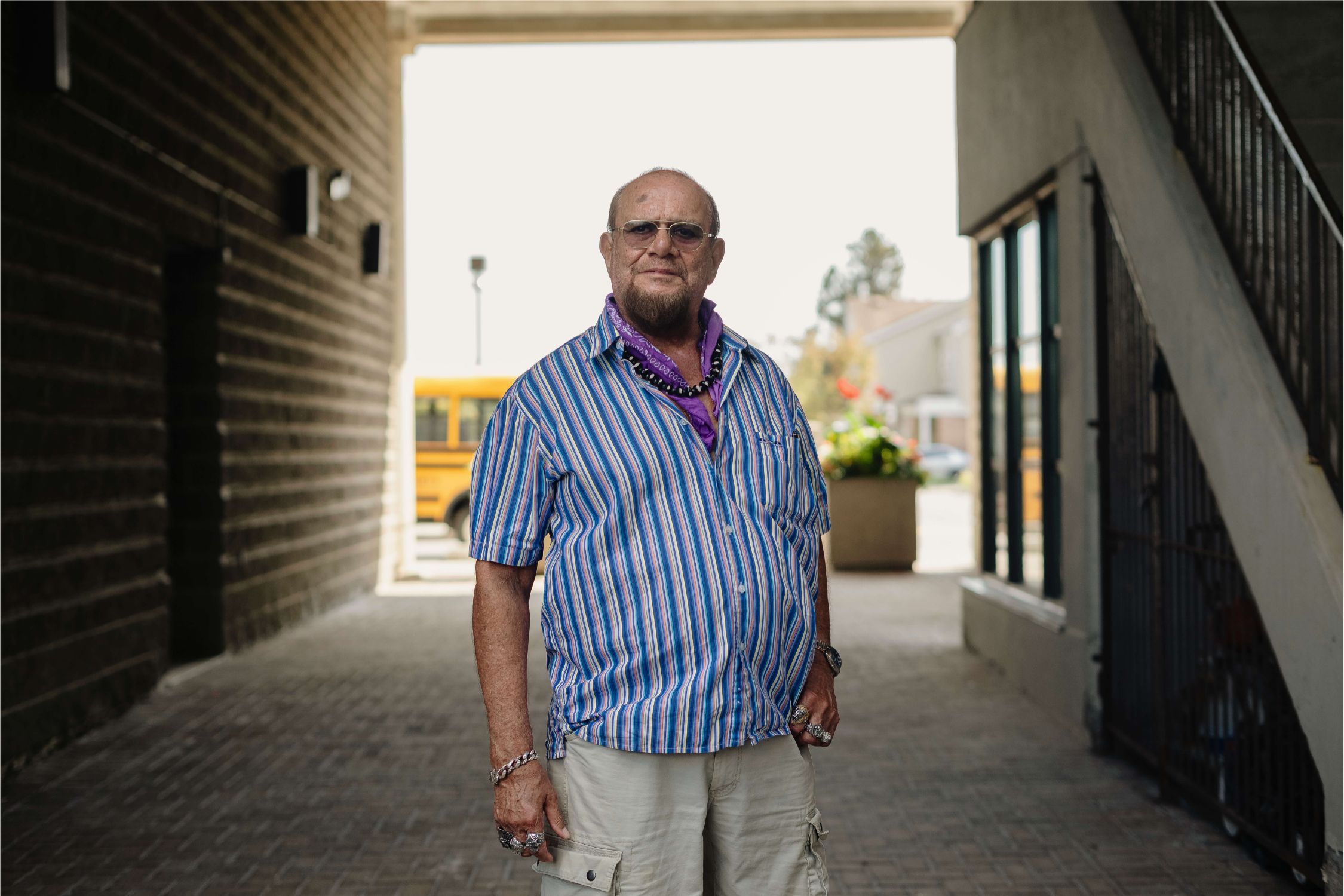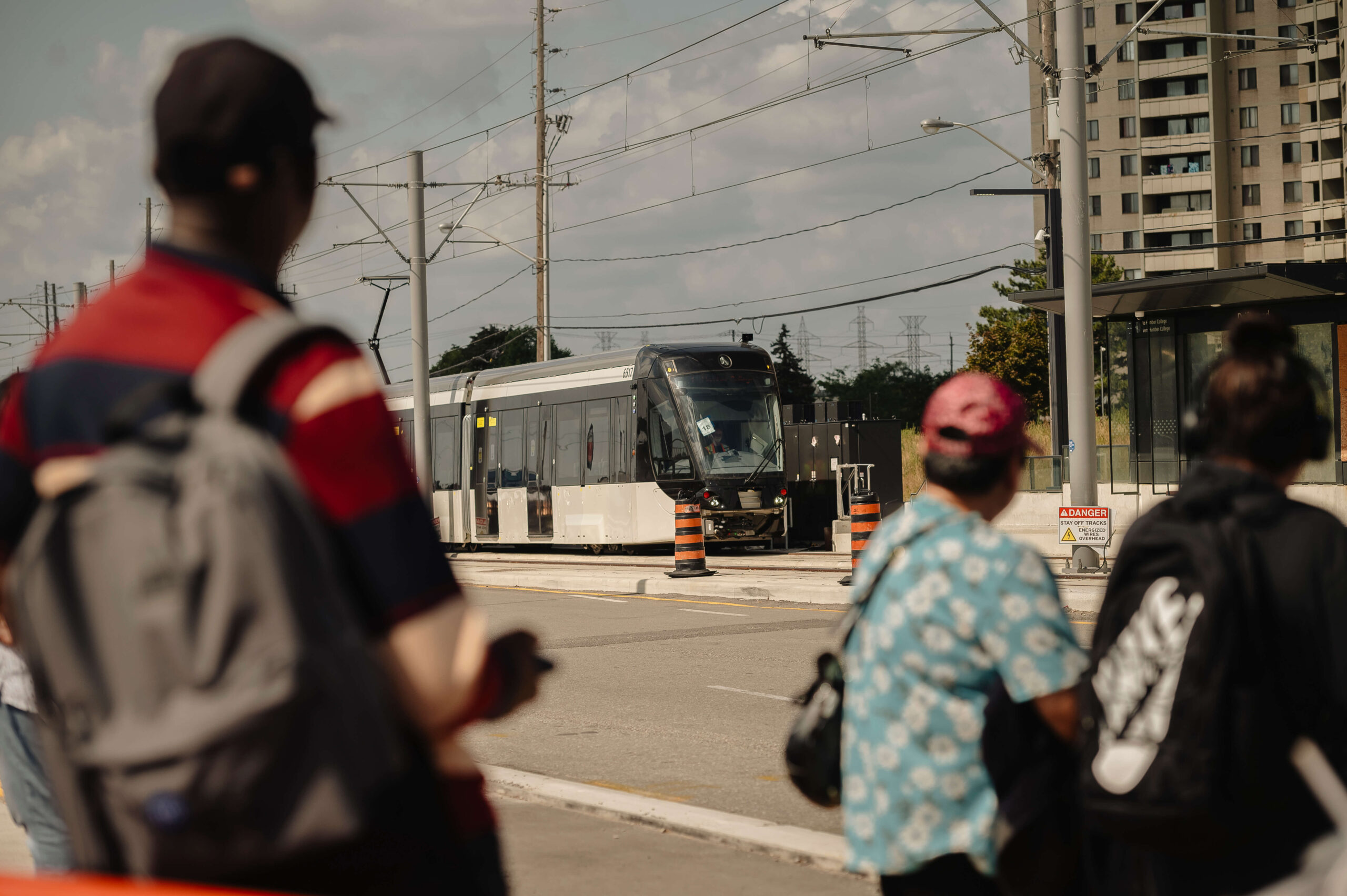My mother and younger sister are still asleep when I begin my journey. I shut the door to our basement apartment, secure the straps of my backpack, and begin my walk through the aisle of grey townhouses towards the Humberwood Loop.
At the bus stop, I fiddle with a ticket I split in half to afford my round trip. The empty accordion bus crawls towards me, and the doors open. Thankfully, the bus driver is silent as I deposit my excuse for a fare. I rest my head against the window as the bus curls onto Humberwood Boulevard heading towards Finch Avenue. I’m on my way to high school. One hour and twenty minutes to go.
I was raised by my single mother in Rexdale and grew up on the 36A Finch West Bus, which travels from Finch West station across north Etobicoke. It’s one of the workhorses of the TTC, connecting workers and students and families from the northwest corridor to the rest of the city. In 2018, the last year the TTC’s ridership statistics were available, the 36 was the city’s third-busiest route, transporting an average of 47,300 riders a day. Earlier this year, city council approved service cuts to the line.
The Humberwood Loop, the end of the bus route, is tucked away deep in Rexdale. There, a sprawling arboretum gives way to squat apartment buildings and rows of suburban homes. Wide intersections are punctuated by plaza strips—Western Unions with crooked, half-illuminated “OPEN” signs, halal shawarma eateries next to Hasty Market convenience stores next to dry cleaners that always seemed to be closed. It’s a low-income neighbourhood of immigrants, where 78 percent of residents identify as visible minorities, most either South Asian or Black.
If you live in Rexdale and need to clock in at 8:30 for work at, say, one of the hospitals in the downtown core, Google Maps says the TTC trip will take you an hour and a half. That’s not accounting for delays, traffic, or not being able to fit on an already overcrowded bus.
Disjointed transit has left Rexdale physically disconnected since it was built. And decades of media depictions painting the neighbourhood as a “ghetto” or “a forgotten corner” have only increased the psychological distance between the neighbourhood and the rest of Toronto.
But soon, though no one can say when exactly, this distance is supposed to be bridged. After almost a decade of contentious politicking and years of construction, the Finch West LRT is slated to open sometime next year. The transit project, delivered by Metrolinx and operated by the TTC, will run above ground through the inner suburbs of northwestern Toronto, with brief underground or below-grade portions at Finch West station and its terminus at Rexdale’s Humber College. On their website, Metrolinx promises the line will “cut down travel time,” “increase transit reliability,” and “offer more choices.”
For the residents of Rexdale, however, who have seen many broken promises from city officials over the years, skepticism is in the air. After so many years, will the Finch West LRT be everything the community needs? Will it finally connect a part of the city that once was just farmland—a neighbourhood which, for almost all of its existence, has been isolated from the rest of Toronto? That might be a lot to ask of a new transit line. But as always, if residents have hope for nothing else, they still have faith in the future of Rexdale.
As always, if residents have hope for nothing else, they still have faith in the future of Rexdale.
On paper, the genesis of Rexdale is attributed to one man: Rex Heslop. In a grainy monochrome photo taken in 1965, Heslop stands with a large paper in his hand, surrounded by eight other white men in suits. They’re all grinning as they look into the camera. Born in 1905 on a farm near the east side of Islington Avenue and Highway 401, Heslop began developing the land we now know as Rexdale in the late 1940s.
The man was on such a roll building houses that the Etobicoke Township Council couldn’t keep up. They couldn’t afford to build infrastructure, like plumbing, to support housing without the tax revenue that industry would bring. So they made a deal with Heslop: he could continue to build homes if he could also establish manufacturing in the area.
Heslop made it happen. With his collaboration, seven industries purchased building sites in the area. Canadian General Electric bought one half of Wardlaw farm, and Heslop bought the other for residential development. In 1952, employees of the A.V. Roe Canadian aircraft factory in nearby Malton purchased a row of Heslop’s homes. By 1954, Heslop’s construction empire consisted of 1754 acres.
But the “father” of Rexdale wasn’t too concerned with bridging the gap between the area and the rest of the city. Ever since its conception, it’s been a neighbourhood disconnected, even within its own boundaries.
When the north campus of Humber College of Applied Arts and Tech opened in 1968, public infrastructure was still under completion. Students and staff had to hike or drive to the nearby Ascot Hotel to access toilets or running water.
There was also no public transit. The TTC refused to service Humber’s north campus because, as covered in a 1969 issue of one student newspaper, it was not “economical.” So the college purchased a private fleet of shuttle buses to service students along TTC routes.
Heslop died a millionaire in 1973. Two years later, the 36 Finch West bus route was extended to accommodate the new Humberwood Loop and rush services to Humber College were established. This is around the time the neighbourhood as I know it began to materialize.
According to the 2021 census, 60 percent of the area’s total population identify as immigrants, most of them recent. Just seven percent of residents report immigrating before 1980. From 1991 to 2001, the numbers jump to double digits at 13 percent, and stay that way.
During that period, however, when writing about Rexdale, the mainstream media mostly covered news stories about poverty, violence, and crime. It was heartbreaking for me to sift through stories about Rexdale in the archives from this time period, when phrases like “projects,” “ghettos,” and “gun-plagued” were used in opinion articles. By the turn of the millennium, not only was Rexdale physically difficult to get to, the recycling of this narrative cemented the neighbourhood’s reputation as a corner of the city most people didn’t want to go in the first place.
My mom raised me in Rexdale. I went to daycare there, and then school from kindergarten to eighth grade at Humberwood Downs Junior Middle Academy, located on Humberwood Boulevard just before Finch Avenue West. I started taking the 36 around age twelve.
During those years, I was just a small child making her way to and from school. Meanwhile, big decisions were being made about transit in my neighbourhood by adults at City Hall.
At one of his earliest press conferences in 2010, Mayor Rob Ford announced that he was killing Transit City, a plan for seven light rail lines, including the Finch West LRT, which took years of organizing led by previous mayor David Miller.
The plan had already received billions of dollars of provincial funding. Some construction was even under way. But Ford wanted to build subways.
In 2012, a kind of coup d’etat was led by Ford’s appointed transit chair. City council voted to forget Ford’s subway dreams and return to a light-rail-based transit plan as initially proposed.
A year after Ford’s reign ended in 2014, my relationship with the 36 Finch West bus became more intimate than ever. I was accepted into an arts high school located in southern Etobicoke. Each day, while the world was still waking up, I was waiting for the 36 bus, wearing a pair of jeans I distressed myself and a short blonde ‘fro.
The journey to school always felt longer than the one home. Many days, the commute was too exhausting. In my first year of high school, I missed over 200 hours of class. I wonder if the LRT was built earlier, making my route more accessible, would my experience have been different?
For Charles “Charlie” Ozzoude, a young health equity researcher who has lived in Rexdale since his family immigrated to Canada from Nigeria in 2010, substandard transit has long been one of the most pressing issues in the neighbourhood.
While living in Rexdale, Ozzoude worked at the Wellesley Institute, St. Michael’s Hospital, and volunteered at the Centre for Social Innovation—all of which are located downtown. That long commute shaped his view of public transit and the ways in which Toronto’s inner suburbs are disconnected from the rest of the city.
Sign up to our free newsletter to get upcoming Finch West and other stories delivered to your inbox.
"*" indicates required fields

He explains that as part of a person’s living, working and learning conditions, transit can be considered a social determinant of health—the term for the ways in which different sociological factors can affect one’s overall wellness.
In 2022, after 25 years of the Ward 1 Etobicoke North seat being hot-potatoed between Ford family members, Ozzoude decided to run for council. His goals to “lower transit fees, increase routes and regularity of service” became an integral part of his campaign, as covered previously by The Local. He was up against Vincent Crisanti, a political ally of the Ford family and once-councillor of the ward for two terms.
“The Ford brothers, Crisanti, [they] haven’t reflected what the neighbourhood looks like,” says Ozzoude. “They haven’t reflected the needs of the neighbourhood.”
As a Black man, immigrant, and a resident of Rexdale with years of experience commuting on public transit, Ozzoude wanted to disrupt the long legacy of white men making decisions about a neighbourhood they don’t necessarily represent. On election night, however, Ozzoude came third with just over 6 percent of votes.
Instead, Crisanti was elected councillor. When it comes to the largest transit project being constructed in Etobicoke North, has the official elected to represent the ward been paying attention? The councillor’s office didn’t respond when I asked how Crisanti had worked to address the concerns of his constituents about the execution of the Finch West LRT.
“The LRT just goes beyond transit,” says Ozzoude. “It intersects with equity. My hope is that this LRT is just the beginning to help address some of the geographic disadvantages that exist within the city.”
At Finch and Kipling one warm morning in June, it’s clear that things have changed since I commuted through the neighbourhood in high school.
Albion Mall is still here, complete with the hot-dog stand that was the highlight of my family’s trips to the place. But the intersection is in disarray. A metal fence creates a border between the mall parking lot and the stretch of Finch Avenue West, with warped fencing sprawled out on the grass below in criss-crossed stacks.
Thirty-six-year-old Adjoba Messam, wearing her Jamaican flag ball cap, carefully makes her way to the intersection while manoeuvring through the maze of thick orange street barricades, some of which are toppled onto their sides. She vigilantly scans the terrain as she approaches the chaotic intersection, wondering where’s the bus stop even located today?
Messam moved to Rexdale in April 2022, after living in a shelter hotel downtown. A year after arriving, she connected with a great-uncle, who happened to live in her apartment complex, and now she accompanies him to the Jamaican Canadian Association at Finch and Arrow Road a couple of times a week.
For Messam, and especially for seniors like her great-uncle, navigating the neighbourhood can feel dangerous.
“I fear for him,” says Messam. “[Seniors] have to completely change their route just to get to the grocery store.”
This intersection is where one of the final platforms is being built for the Finch West LRT construction, begun in 2019. The construction seems perpetual, but it is a sign that the loaded promise of a functioning LRT might actually be kept. For now, however, the installation is only causing confusion and inconvenience.
The “father” of Rexdale wasn’t too concerned with bridging the gap between the area and the rest of the city. Ever since its conception, it’s been a neighbourhood disconnected.
According to residents, communication and transparency have been poor. Notices for bus stop relocation aren’t clear, and construction sites have been left in shambles.
“It’s really messy up here,” says Messam. “You only hear about the politics evolving around [the line] being built. I never hear about how dangerous it is for people, not on the news.”
And while no one can really say when the LRT will be complete, the fate of the 36 is clearer.
Earlier this year, the TTC detailed a proposal to eliminate the 36 Finch West local bus service west of Finch West Station when the LRT begins operation.
“I’m disappointed to hear they’re getting rid of it,” says Messam, who has travelled the route for many years.
It’s more than nostalgia tugging at residents’ heart strings. Some people will be walking longer distances to access stops if their local bus stops are not directly replaced by an LRT station.
The changes are also shrouded in uncertainty. When will the project be finished? In 2022, Metrolinx announced the line would be open by summer 2023. The summer has come and gone, and construction still isn’t complete. In a statement to The Local, Metrolinx said: “Mosaic, our contractor on the project, has informed us that major construction remains on course to be completed by the end of 2023. An exact opening date will be determined with the TTC once construction is complete.”
And given the current state of disarray in the neighbourhood due to the project, concerns about a smooth final transition from a longstanding bus system to the finally completed light rail line are not misplaced.
Four stops are to be built across Etobicoke North: Albion, Martin Grove, Westmore and the final stop, Humber College. As for the riders who need access further northwest, beyond Humber College, like me, the old 36 route will be serviced by the 37 bus, which will run from the Humberwood Loop to Humber College.
Until then, the 36 bus and its riders are stuck navigating the mess.
One evening this summer, after a visit home, my mom stretches all five-feet-four-inches of herself to kiss me farewell on the cheek. Her grey shih tzu Abby, a kind of third daughter to her, brushes against my knees and I give her a quick scratch on the head. A 36 bus creeps towards me, leaving behind a queue of idling vehicles that leads onto Humberwood Boulevard—the beginning of my two-hour journey home to the east end.
Though this route isn’t perfect, I’m grateful it exists. As it carries me through Rexdale, I see people with backpacks, babies and walkers. People wearing dashikis or dumallas take refuge under the shade of trees while they wait for another 36 to arrive.
I transfer to a second bus, and as we head toward Kipling Station we’re stuck in traffic by the unfinished Humber College platform. Between heads and shoulders, I can see the foundational framework of the light rail track. I stare out the window at the construction site—an unfinished mass of steel and cement, but also a promise, however overdue and uncertain, that my family and I will never again feel worlds apart despite living in the same city.
The Finch West Issue is made possible through the generous support of United Way Greater Toronto and Metcalf Foundation. All stories were produced independently by The Local.

